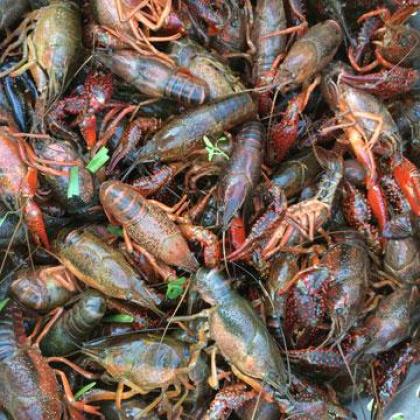
Bruce Schultz
The LSU AgCenter will host five crawfish meetings in south Louisiana to help producers get ready for the upcoming season.
“Pond management, including water and vegetation management, are among the topics that will be addressed,” said Mark Shirley, LSU AgCenter crawfish specialist.
Shirley and Greg Lutz, also an LSU AgCenter crawfish specialist, will lead the discussions and answer questions.
Lutz said crawfish production is all about creating a healthy aquatic habitat for crawfish to reproduce and grow throughout the season.
“It’s important for farmers to recognize how vegetation and weather factors influence the water quality and in turn affect crawfish survival and growth,” Lutz said. “Other factors also come into play so that each pond is unique. That is why some ponds produce better than others.”
The meetings will be held:
— Sept. 23 at the Jefferson Davis Parish LSU AgCenter extension office in Jennings at 1006 S. Lake Arthur Ave. at 6 p.m.
— Sept. 25 at the Acadia Parish LSU AgCenter extension office in Crowley at 157 Cherokee Drive at 6 p.m.
— Oct. 1 at the Evangeline Parish LSU AgCenter extension office in Ville Platte at 230 Court St. at 6 p.m.
— Oct. 2 at the Vermilion Parish LSU AgCenter extension office in Abbeville at 1105 W. Port St. at 6 p.m.
— Oct. 3 at the Lafourche Parish LSU AgCenter extension office in Raceland at 115 Texas St. at 6 p.m.
Another topic to be discussed will be how second cropping rice affects crawfish yields.
“Rice farmers will sometimes harvest a second crop of rice in late October and then reflood the field for crawfish production. Usually, this practice results in lower overall crawfish production and a late-season crop,” Shirley said.
Two demonstration ponds have been established at the AgCenter H. Rouse Caffey Rice Research Station in Crowley to show the effect of second cropping, Shirley said.
The rice in both fields was harvested in early September. The ratoon crop in one field will be harvested in late October. The rice in the other field will be left for crawfish forage.
Vegetation, water quality and crawfish production will be monitored throughout the season to demonstrate the difference in management practices, he said.
